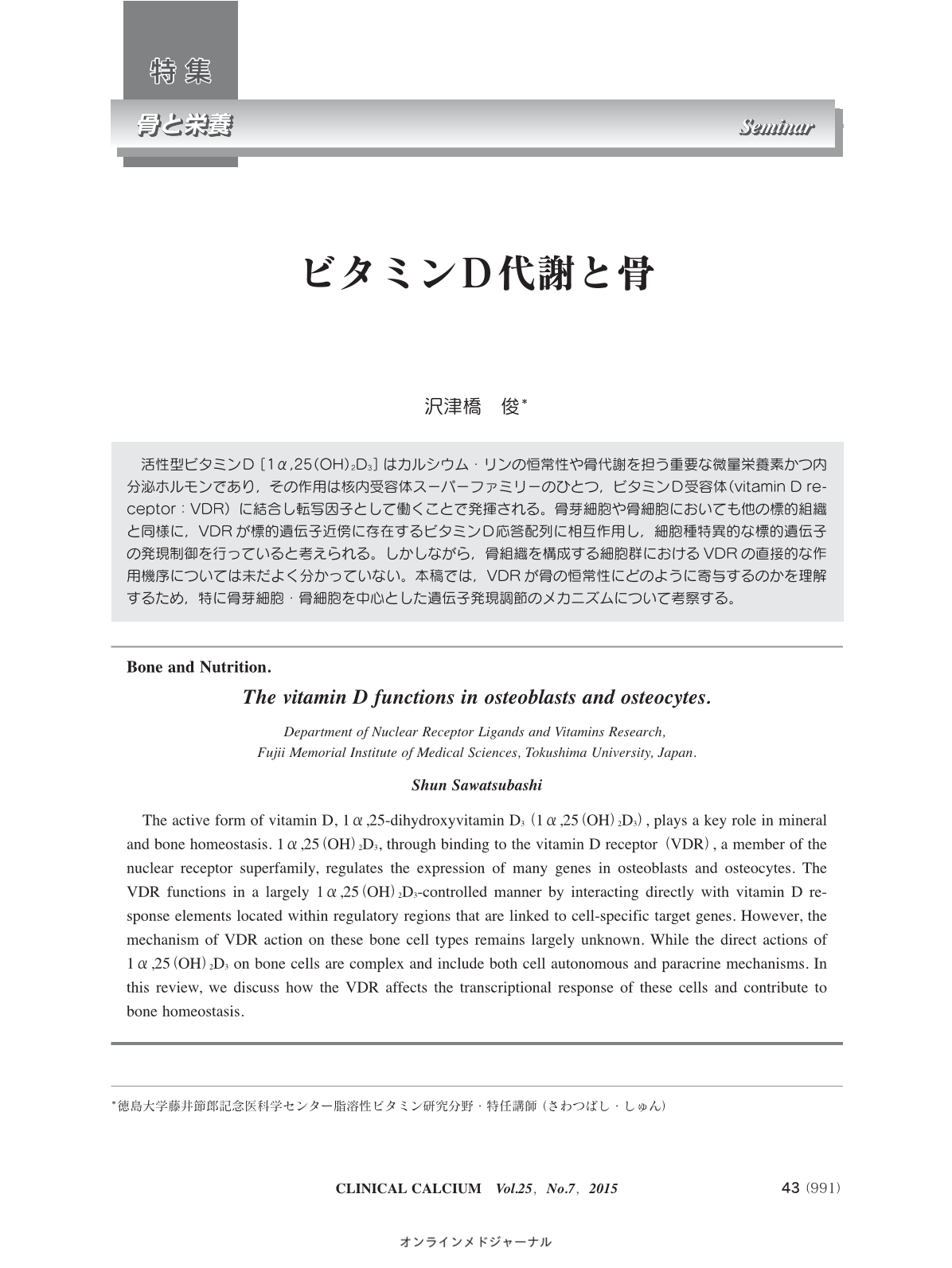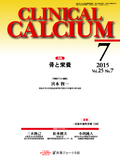Japanese
English
- 有料閲覧
- Abstract 文献概要
- 1ページ目 Look Inside
- 参考文献 Reference
活性型ビタミンD[1α,25(OH)2D3]はカルシウム・リンの恒常性や骨代謝を担う重要な微量栄養素かつ内分泌ホルモンであり,その作用は核内受容体スーパーファミリーのひとつ,ビタミンD受容体(vitamin D receptor:VDR)に結合し転写因子として働くことで発揮される。骨芽細胞や骨細胞においても他の標的組織と同様に,VDRが標的遺伝子近傍に存在するビタミンD応答配列に相互作用し,細胞種特異的な標的遺伝子の発現制御を行っていると考えられる。しかしながら,骨組織を構成する細胞群におけるVDRの直接的な作用機序については未だよく分かっていない。本稿では,VDRが骨の恒常性にどのように寄与するのかを理解するため,特に骨芽細胞・骨細胞を中心とした遺伝子発現調節のメカニズムについて考察する。
The active form of vitamin D, 1α,25-dihydroxyvitamin D3(1α,25(OH)2D3), plays a key role in mineral and bone homeostasis. 1α,25(OH)2D3, through binding to the vitamin D receptor(VDR), a member of the nuclear receptor superfamily, regulates the expression of many genes in osteoblasts and osteocytes. The VDR functions in a largely 1α,25(OH)2D3-controlled manner by interacting directly with vitamin D response elements located within regulatory regions that are linked to cell-specific target genes. However, the mechanism of VDR action on these bone cell types remains largely unknown. While the direct actions of 1α,25(OH)2D3 on bone cells are complex and include both cell autonomous and paracrine mechanisms. In this review, we discuss how the VDR affects the transcriptional response of these cells and contribute to bone homeostasis.



